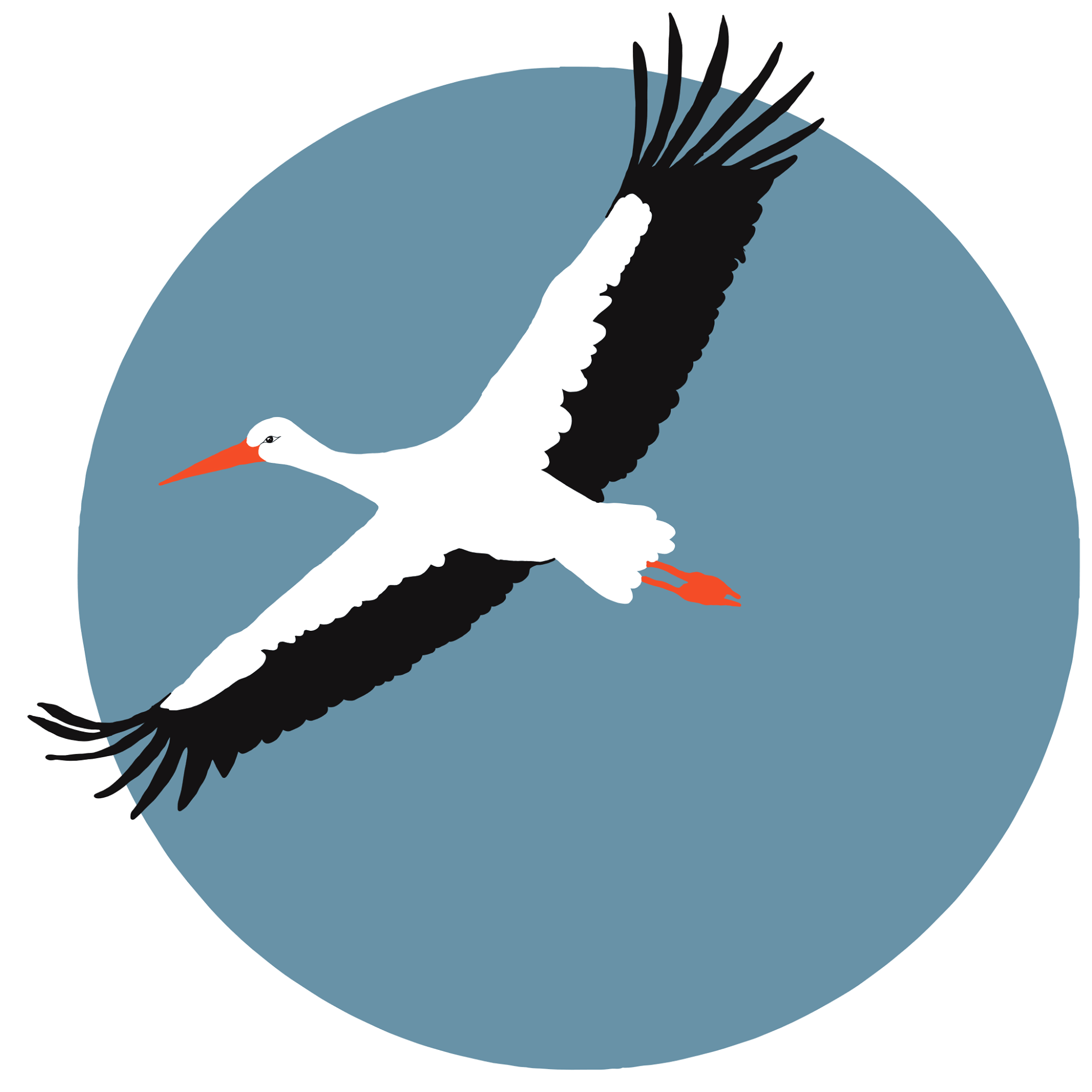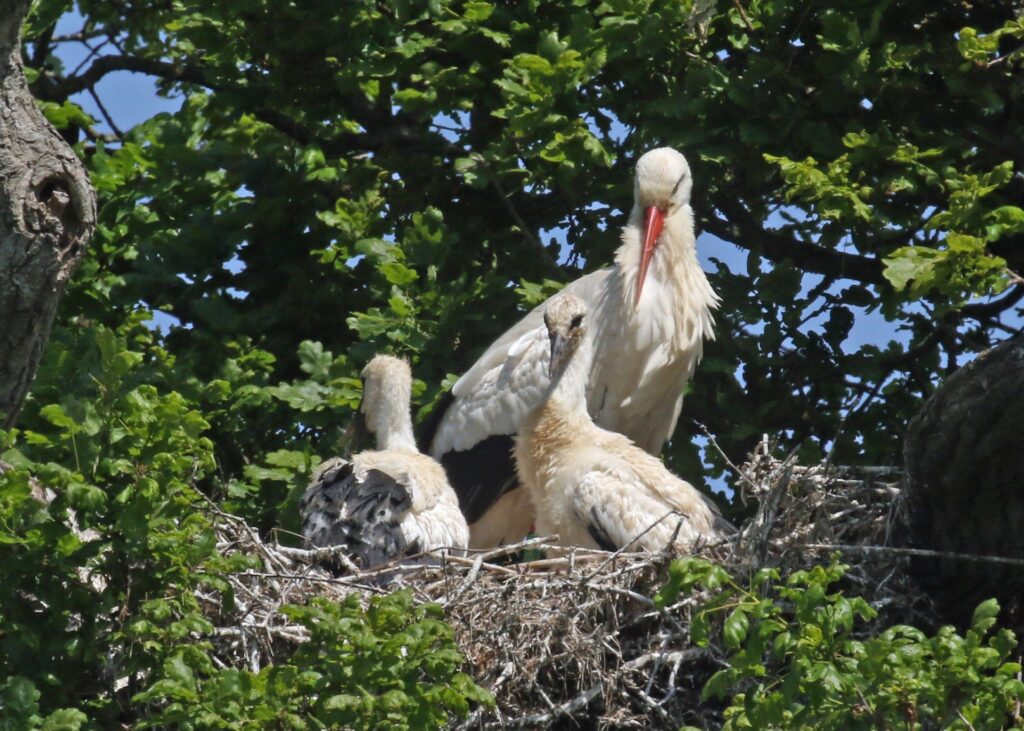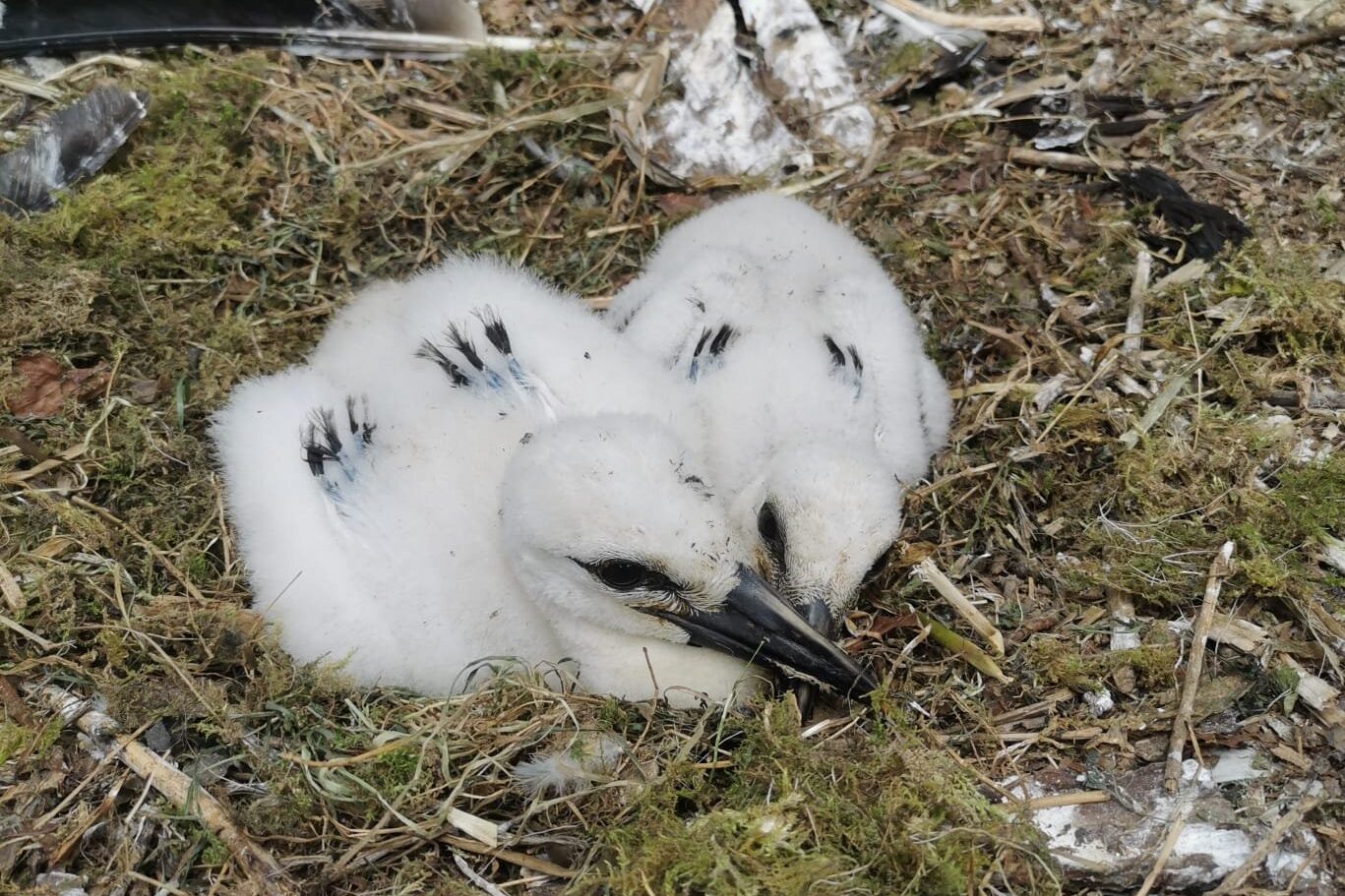Where are our Storks?
The live map is being updated with the 2025 tags, apologies for any interruption in map use – they should be up and running soon! We have deployed 10 tags in 2025. Thank you to all the supporters who have made this possible.
The map below shows the live location of storks satellite tagged in and 2023 and 2024. ACE Nature have been working to calibrate and display this data and we are still making some adjustments and improvements.
- If the map is slow to load, please refresh your page
- Hit the Play button on the left panel to see the collective journey of all storks over time.
- Pause and restart flights by clicking on the date/time at the top of the left panel.
- For individual exploration, return to the start time, then use the selection boxes to toggle specific birds on or off.
- Left-click and drag to tilt and rotate the map, offering a bird’s-eye view of the storks’ flight heights.
- Right-click and drag to navigate the map on your screen.
- Use the mouse wheel or drag two fingers on your mouse pad to seamlessly zoom in and out.
- Click on the map in the bottom right to toggle between the satellite image and a map view.
- Easily return to the satellite view by clicking the satellite image again.
Feedback Matters: Help us enhance your experience. Share your thoughts and suggestions by contacting us through the Contact Us page.
Note: Currently featuring storks from this year, with more additions and details planned for the future. Stay tuned for updates.
Stork Profiles
All of our storks are equipped with identifying rings: blue project rings on the left leg, starting with ‘GB’, and smaller metal BTO rings on the right ankle. However, to foster a deeper understanding of our storks, we have named some of them. As you observe our storks, you’ll notice a pattern in their names. The project commenced in 2016, and storks introduced that year have names beginning with the letter ‘A’. Those from 2017 carry names starting with ‘B’, and this pattern continues. For instance, storks hatched in 2023 are distinguished by names beginning with ‘H’ as you’ll see below.
The Adventurous Explorers
GBL5 and GBL6
GBL5 and GBL6 ‘Indiana’ hatched in the middle of the stork pen at Knepp. Their mother is a non flying bird, hence why they were hatched on a ground nest, but interestingly the father can fly. These storks hatched at the start of May and were monitored by project staff and volunteers. From genetic feather testing, we learnt that both are female. Local company Avery & Brown sponsored a satellite tag for GBL6 and named her Indiana, and satellite tags were put on both of them.
GBL5 was the first bird from the whole colony who moved away from Knepp in mid August 2024. She first headed over to Kent where there were sightings of over 70 storks flying together. Following a few days there, the group moved back across Sussex and travelled down through Devon to Cornwall. GBL6 was with the group at this point. They main group seemed to split up after a few days, with around 40 going to Sussex again and around 30 heading back to Kent. GBL6 was the first one to migrate, crossing the channel from Kent into Belgium, and GBL5 soon followed, crossing at Eastbourne into France.
GBL6 ‘ Indiana’ was the first bird in the 2024 cohort to cross the channel (as far as we know) on the 25th August. She took an interesting and long journey over the water into Belgium and had to contend with strong winds at the time.
On the 26th August, a Sussex bird group reported: ‘38 White Storks have just flown South-East over the Royal Eastbourne Golf course and out to sea.’ From satellite tag data it can be seen that GBL5 was with this group.
By mid September, GBL5 is seen with a group of around 200 storks in France.
Sussex’s Resident Forager
Hector (GBA9)
A male stork, GBA9, emerged from Knepp’s second-ever nest in 2023, alongside siblings GBA7 and GBA8. His parentage involves a male from Poland and a female from France. GBA9’s journey began with regurgitation observed in April, signifying successful hatching. Unlike some counterparts, he chose not to migrate in his first year.
Throughout Sussex, GBA9 foraged with fellow storks, venturing to Havant and Ramsgate. His winter months were marked by regular sightings at Knepp and Wadhurst Estate, showcasing a preference for staying closer to home.
Captured in a nest photograph, GBA9, alongside nest mates, reflects the hard work of parent storks in providing abundant food and defending against intruders. The decision not to migrate in his first year adds an intriguing dimension to GBA9’s story.
The Ground Nest Pioneers
Hugo ‘Snappy’ (GBC6) and Hazel (GBC7)
Two very special chicks with completely different personalities hatched within a ground nest at Knepp.
Ground nest pioneers GBC6 and GBC7, hatched in Knepp’s first-ever ground nest in 2023. Both storks resulted from rehabilitated parents GB56 and GB05, unable to fly due to previous injuries. The siblings showcased distinct personalities from the start. GBC6 became known to project staff and volunteers as ‘Snappy’ as he would lunge at anyone who got close to the nest. This is quite unusual behaviour for a stork chick, more typically they will play dead when approached which is what nest mate GBC7 used to do.
Satellite tagged on July 7, 2023, both chicks fledged the same day. The siblings migrated across the channel after exploring the south coast, affirming the project’s success in fostering natural instincts in rehabilitated storks.
Interestingly, GBC6 spent his first year in France, not venturing very far until his second year when successfully made it all the way to Morocco and was photographed in Kenitra.
GBC7, the female, displayed wariness toward humans, often playing dead upon observation. This is common behaviour for stork chick. In contrast, GBC6, the confident and vocal male, eagerly snatched up food. Close monitoring through a camera trap allowed the team to understand and appreciate the unique traits of each chick.



